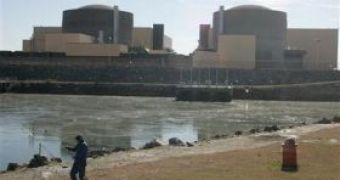Severe drought raging across the southeast regions of the United States will probably determine a temporary reduction in electric power production capabilities of most of the nuclear plants, or even shutdowns, until the water levels in the rivers that supply the lakes near the power plants rise again to their normal debits. Water masses represent a critical component in the correct operation of a nuclear power plant, that's why all of them are usually built in the close proximity of a large lake or river.
During exploitation, nuclear power plants circulate huge amounts of water through their systems, in order to keep the temperature of the core under control. Officials have already announced that an eventual shutdown of a series of nuclear reactors in the U.S. will not have direct effect on the population, and promise that no blackouts will be experienced. However, they predicted that the price of the electric energy would most likely go up, as the country would be forced to import electric power from the neighboring countries.
It is thought that out of the total of 104 nuclear reactors scattered throughout the country, almost a quarter are affected by the lack of rain. Massive quantities of water are used to cool the Steam resulted after it has been processed through the steam turbines, however the drought has evaporated large quantities from the nearby lakes, and water pumped out of the nuclear power plants will not cool efficiently under the hot Sun, increasing the probability that drains would heat up water instead of cool it.
And like that is not enough, predictions reveal that the water levels may drop bellow the intake pipes, shutting down the nuclear power plants for an indefinite amount of time. A solution would be to lower the intake pipes even more, however modifying a 5,4 meter concrete pipe requires extensive work that may extend over a few months, backup systems to ensure that the power plant is functional in case the water levels rise right after the work has began, and it is not economically justified.
A similar situation has been experienced in Europe in the summer of 2006, when the whole continent was covered by a massive heat wave, that forced a temporary shutdown of several nuclear facilities in Germany, France and Spain.
Energy analyst, Daniele Seitz, argues that if the power plants in the southern regions of the U.S. are shut down, the costs to replace the required energy with electricity imported from foreign countries would be ten times higher than the usual payed price.
The water drawn for the near lakes is only used as a cooling agent in heat exchanges that convert steam circulating through closed systems back into water, thus it never comes in contact with nuclear material and is not contaminated with nuclear residue or radiation. Unlike other old-style nuclear power plants that use cooling towers and lose part of the water through evaporation processes, most return the whole quantity back into the lake.
Nevertheless, one cannot release water at any temperature in the lake, because hot water can kill fish and plants. Such is the case of the Browns Ferry facility which was forced to shut down one of its reactors because the temperature of the Tennessee River was higher than the standards imposed by the TVA. Another problem is that nuclear power plants are not designed to stop and start repeatedly, whether they work for long periods of time or are shut down for long periods of time, because repeated start-shutdown actions wear multiple components of the reactor.

 14 DAY TRIAL //
14 DAY TRIAL //